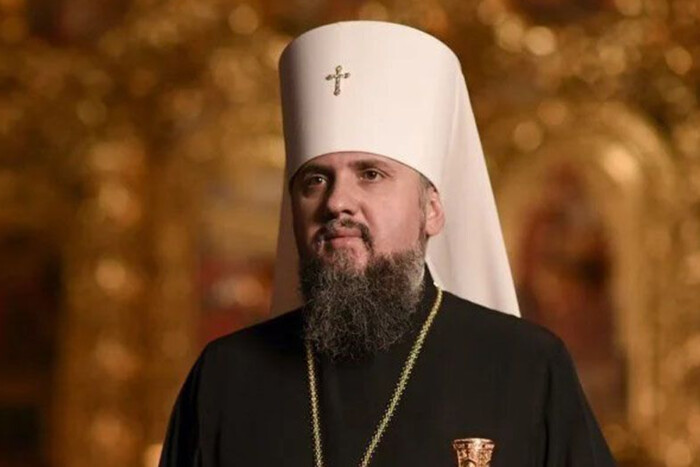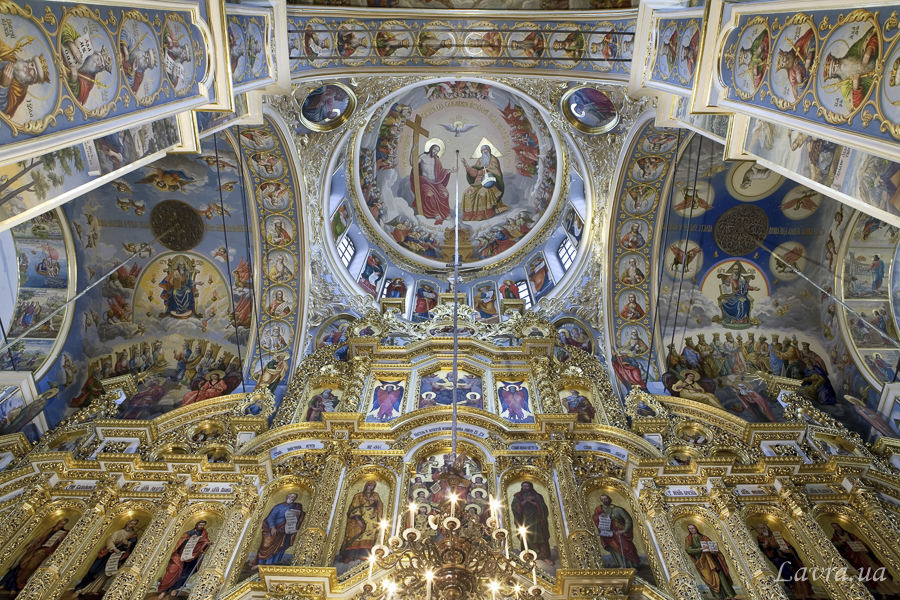During the Christmas service on 7 January in the Kyiv Pechersk Lavra, this largest Ukrainian monastery became a place for the Ukrainian church and Ukrainian liturgy for the first time since the 18th century.
This happened after the state rescinded its lease agreement with the Russian-backed Ukrainian Orthodox Church, which had hitherto held services in two major churches of the monastery, and allowed the independent Orthodox Church of Ukraine to hold a Christmas service in one of them:
The Kyiv Pechersk Monastery holds a symbolic place in Ukrainian history. From here, Ukrainian medieval and renaissance church tradition and culture spread to Moscow in the 12-17th centuries. In particular, Yuri Dolgorukiy, the founder of Moscow, is buried here.
However, the monastery became subordinated to the Russian Orthodox church with the expansion of the Russian empire to Ukraine while Ukrainian independent churches were outlawed in the Russian empire and the USSR. As part of the Russian Orthodox Church, the Church Slavonic language was Russified and resembled Russian.

The Ukrainian-language liturgy was not sung in the monastery for nearly 300 years -- until 2022.
"Today we celebrate the second birth of both this cathedral church and our Pechersk Lavra itself because the spirit of the dirty teachings of the 'Russian world' is leaving them. And the spirit of true service to the holy Orthodoxy and the Ukrainian people is returning," said Kyiv Metropolitan Epiphany, the leader of the independent Orthodox Church of Ukraine, when he finished his first Christmas liturgy in the Lavra's Dormition Cathedral on 7 January 2023.
The Ukrainian church tradition survived bans in the Russian Empire. After Ukraine's independence in 1991, independent Orthodox churches splintered off from the one subordinated to the Moscow Patrarchate, but existed in a schismatic state, i.e. were not recognized by the rest of world Orthodoxy.
Following Russia's invasion of Ukraine in 2014, the movement for official Ukrainian Orthodox church independence accelerated, until Ecumenical Patriarch Bartholomew bestowed official autocephaly on a united Orthodox Church of Ukraine.
It quickly became the most popular denomination in Ukraine. Following Russia's full-scale war in 2022, 54% of Ukrainians professed their allegiance with the OCU, a July poll showed
.
The Moscow-affiliated church lost believers, with 4% of Ukrainians answering that they are its faithful in 2022, down from 15% in 2020. However, it still used to rent some of the country's main churches until 2022, when the lease agreement was terminated.
"Our Father" prayer during the Ukrainian Christmas service in Kyiv-Pechersk Lavra, the first in 300 years.
The monastery was controlled by Russia during its rule over Ukraine. The Russian church continued renting it until the end of 2022. pic.twitter.com/ErW6iGRsiY
— Euromaidan Press (@EuromaidanPress) January 7, 2023
The return of the Ukrainian church to Kyiv's main monastery is both a symbolical and very practical step. This is one of the oldest monasteries in Ukraine. After Ukraine lost its autonomy in the 18th century, Moscow's control over the Lavra was one of the main tools to also subordinate Ukraine culturally and destroy its own tradition.

These times are now gone, when on 7 January 2023 the Ukrainian-language liturgy to melodies of Ukrainian composers sounded in the Dormition cathedral of the Lavra.
"The Pechersk Lavra is taking confident steps today to preach the peace of God, not the 'Russian world,' to be a true house of prayer, to serve the Ukrainian people as an example of piety and good deeds," said Kyiv Metropolitan Epiphany in his sermon. "We thank you, dear brothers and sisters, to all who dreamed of Ukrainian prayer in this holy place, of its liberation from the captivity of the 'Russian world.' Your prayers and your position supported our state in this difficult but completely correct decision [to take the Lavra from the Russian-controlled church and return it to Ukrainian]."
The Metropolitan also said that today "all Ukrainian saints celebrate together with us the possibility to pray in this holy place," including Kyivan Prince Volodymyr who baptized Rus and Petro Mohyla who developed the Lavra in the 17th century, before it was taken by Muscovy.
"Today marks 950 years since the time when, according to tradition, the Mother of God called the builders of this church from Constantinople to Kyiv, so that a church could be built here on the bank of the Dnipro. The architects called it similar to heaven. We have renewed this spiritual connection between Kyiv and Constantinople, between the Church of Rus-Ukraine and the Mother Church of Constantinople," Kyiv Metropolitan Epiphany said.
Notably, after the liturgy, a choir from the Ukrainian Carpathian mountains also performed ancient Ukrainian carols in the church. These carols have lots of pagan motives, describing how the sun and stars are rejoicing at the beginning of the New Year and how they will bring a good harvest, peace, and happiness to the people. It highlights the peculiarity of Ukrainian tradition, which, together with folk motives in choir singing, has integrated many other pagan rituals into Christianity.
https://twitter.com/EuromaidanPress/status/1611860732924104711?
However, when the emerging Russian empire consolidated its power over northern Ukraine, the monastery became subordinated to the Russian Orthodox church in 1688 and remained in that status until 2022. While initially, Kyiv was the metropolitan center of the Orthodox church in both what is now Ukraine and Russia, it lost its status after the disintegration of Rus and the empowerment of Moscow. To make a long story short, since 1596, three church wings were present in Ukraine -- one subordinated to Moscow, another to Rome, and yet another independent, although all maintained a similar Orthodox liturgy. With Ukraine's state independence in 1991, the Ukrainian autocephalous (independent) orthodox church quickly became more popular than the Moscow-led church in Ukraine. In 2018, the Ukrainian church received a Tomos of independence, which meant it was recognized as equal by all other world orthodox churches. Until 2022, the Russian-led church still rented from the state several key historical church buildings in Ukraine, including the Pechersk Lavra in Kyiv. However, since the Moscow-led church today has almost 10 times fewer believers than the independent Ukrainian church and has actively cooperated with Russia during its 2022 war against Ukraine, the Ukrainian government decided to cancel lease agreements and transfer the church buildings to the Ukrainian independent church. Currently, the public discussion is whether the Russia-led church should be outlawed in Ukraine at all -- a move supported by half of Ukrainians according to a recent poll. Tomos ante portas: a short guide to Ukrainian church independence
Read more:

